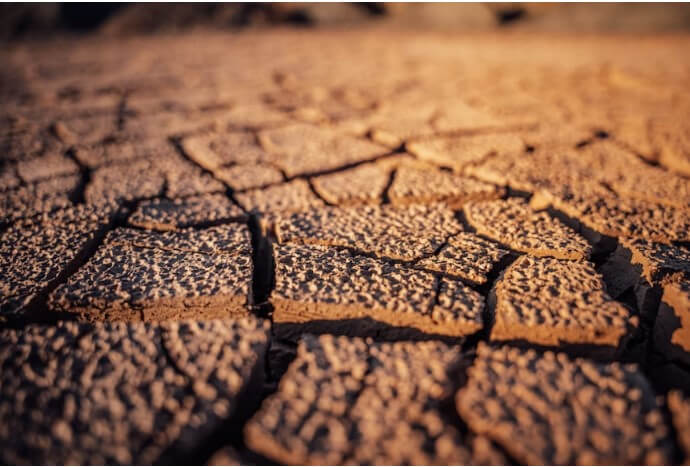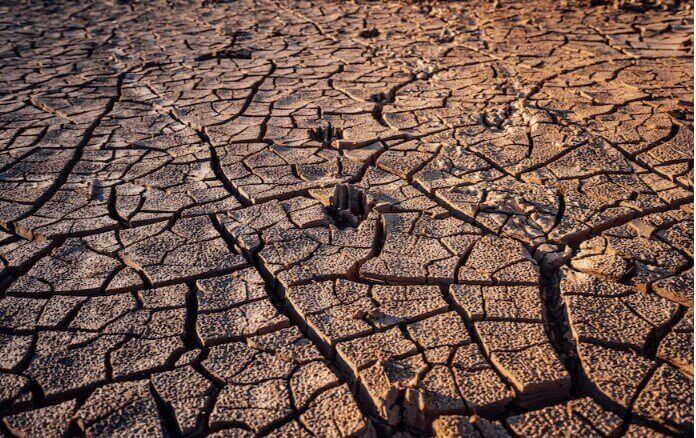How Analysis of Soil Erosion Is the Key to Landscape Regeneration

Introduction
Imagine waking up one day to find that your beautiful landscape has been reduced to a barren, lifeless wasteland. The streams and rivers are running dry, the trees have disappeared, and the once fertile land is now nothing but a dusty desert.
This is the devastating impact of soil erosion – a process that can wreak havoc on landscapes around the world. But what if we told you that analyzing soil erosion could be the key to regenerating these damaged environments?
In this article, we’ll explore how understanding soil erosion can help restore landscapes and make our planet more sustainable for future generations.
What is soil erosion?

Soil erosion is a natural process that occurs when the topsoil layer is removed or displaced by wind, water, or other factors. It happens every day in different forms and intensities around the world due to various human activities such as deforestation and agriculture.
There are two main types of soil erosion: water erosion and wind erosion. Water erosion happens when running water carries away the topsoil layer due to heavy rainfalls without enough vegetation cover to protect it from being washed away. On the other hand, wind erosion occurs when strong winds blow off unprotected surface soil particles.
Soil erosion does not only affect agricultural productivity but also has severe environmental impacts on aquatic ecosystems, air quality, and biodiversity loss. In addition, it can lead to land degradation which makes it harder for plants to grow leading to desertification.
Therefore, understanding soil erosion processes is vital for sustainable landscape management practices. By implementing effective measures like planting trees along riverbanks or using conservation tillage methods that minimize soil disturbance during crop production; we can reduce soil loss while regenerating landscapes at large scales.
The process of soil erosion
The process of soil erosion is a natural occurrence that happens over time. It can be triggered by both natural and human factors, such as rainfall, wind, deforestation, or agricultural practices.
Rainfall is one of the main causes of soil erosion. When rain falls on bare or exposed land surfaces, it loosens the topsoil and carries it away with the runoff water. This process is known as sheet erosion and can cause significant damage to croplands.
Wind erosion occurs when strong winds blow across dry and unprotected soil surfaces. The wind picks up loose particles of soil and dust, carrying them away from their original location.
Deforestation also contributes to soil erosion. Trees are essential in holding the topsoil together with their root network. Without trees, there’s nothing to hold the earth in place against forces like rainwater or wind gusts.
Intensive agricultural practices can lead to excessive tillage which removes plant cover exposing bare soils making them susceptible to erosions caused by water movements during heavy rains.
Understanding the various processes involved in soil erosion helps us take appropriate steps towards preventing further degradation of landscapes from continued loss of fertile topsoils through comprehensive conservation measures aimed at preventing any form of environmental degradation due to pollution or other human activities that impact negatively on our ecosystem functionality
The impact of soil erosion
The impact of soil erosion can be devastating. When topsoil is eroded, it takes with it the vital nutrients that plants need to grow. This leads to a decrease in crop yields, which can have serious consequences for farmers and food security.
In addition, soil erosion can cause water pollution. As the sediment from eroded soil runs off into streams and rivers, it carries with it pollutants such as pesticides and fertilizers. This can harm aquatic life and make water unsafe for human consumption.
Soil erosion also contributes to climate change by releasing carbon stored in the soil into the atmosphere. This happens when organic matter in the topsoil is exposed to air and begins to decompose.
Soil erosion can lead to land degradation, making land unsuitable for agriculture or other uses. This has economic implications for communities that rely on those lands for their livelihoods.
Understanding the impacts of soil erosion is crucial if we want to protect our environment and ensure the sustainable use of our natural resources.
Soil erosion and landscape regeneration
Soil erosion can have a significant impact on the landscape, causing damage to both soil fertility and plant life. However, by understanding the process of soil erosion and its effects, we can take steps toward regenerating our landscapes.
One key way to regenerate degraded landscapes is through planting vegetation that helps hold the soil in place. This could include grasses with deep root systems or trees that create windbreaks.
Another important aspect of landscape regeneration is analyzing where and how erosion is occurring. By identifying areas of high erosion rates, we can implement targeted solutions such as contour plowing or terracing to slow down the movement of water across slopes.
In addition to physical interventions, changing farming practices can also make a big difference in preventing further soil loss. For example, using cover crops or crop rotation techniques can help reduce runoff and increase organic matter in soils.
Analysis of soil erosion provides valuable insight into how we can work towards restoring healthy ecosystems and productive farmlands for generations to come.
Conclusion
Soil erosion is a major concern that affects the landscape in various ways. It can lead to loss of fertile soil, nutrient depletion, and decreased biological activity. However, by analyzing the process of soil erosion and taking preventive measures such as terracing, crop rotation, and contour farming among others, we can effectively regenerate the landscape. By adopting these measures to reduce soil erosion rates, we not only improve our environment but also ensure sustainable agriculture practices for future generations. Therefore let us be responsible stewards of our lands by promoting landscape regeneration through effective analysis and prevention of soil erosion.





